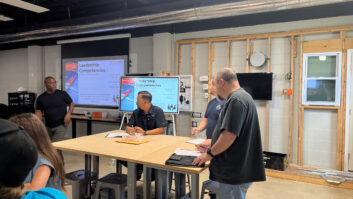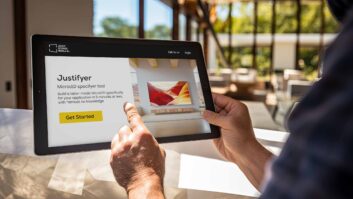Over the weekend, I volunteered for an event, the Ride for Roswell. It is the largest one-day cycling (bicycles, not motorcycles) event in the country and raises funds for our local cancer institute. Halfway through the event, which hosts 8,000 riders with 2,000 volunteers, rain begin to fall from the sky. Sure, one can bike in the rain, but it can lead to hazardous conditions and creates an entirely new set of problems to solve.
The anticipated weather, calling for 100 percent chance of rain (which really is not a chance then is it?), led the powers that be to cancel the two longest rides, a 60-something and a 102-mile ride. Even so, the event raised more than 4.5 million dollars for cancer research.
Such things could never have happened without constant communication in numerous different areas down to the desire of the riders to, well, ride! It was extraordinary to watch hundreds of cyclists line up at the starting area knowing they were riding into the storm (I believe Buffalonians are just a tougher breed). Isn’t that the way to push through life—willing to go on when things don’t seem quite possible?
Two years ago, my engineer and I were standing in a basement area that we knew to be a future home theater. The walls and ceilings (yes, ceilings) were concrete. The floor had yet to be poured, so we stood upon the gravel. All we knew about this future theater was equipment had to be housed in a utility room many “right angles” away, and the client was not sure on which wall he wanted the screen to live. The room was equipped with three entrances: an underground tunnel to his carriage house, a staircase to the first floor, and an opening to the rest of the basement. Doors to these areas were not acceptable, and they were not sure studs and drywall would ever be added to the room.
So there we stood. How does one run wires in a room without equipment, ceilings, or walls?
After much reflection, my engineer came up with the idea to run it underground. We had conduit dropped to each wall before the floor was poured with an access panel built at the center of the room, to connect each wall to the center of the room. We then ran conduit back to the utility room. Months later, it turned out, walls and a ceiling were added to the design. A 12-foot-by-12-foot star ceiling was added as well. Heavy curtains with backing closed off each doorway, with bar seating and a walkway at the back of the room. That way, one coming down the stairs could pass behind the two rows of seating instead of walking past the front of the screen.

The theater that was once essentially a concrete bunker. With cooperation between all trades and a bit of ingenuity, even the most improbable jobs can be made possible.
Because the room was essentially a concrete bunker, we had to add additional antennas for both the Crestron remote and a wireless access point to allow the iPad and phones to work.
What made the project successful was the ability for all the trades on the project to work together. Certainly, the design of this improbable theater was far from the magnitude of planning an event in the rain with 10,000 people raising money for cancer, but it was an impressive feat nonetheless. Tackling projects unusual in scope takes talent and perseverance. Meeting with everyone, and making sure all voices are heard, one can find different perspectives to help achieve the common goal. You also have to have flexibility, since unforeseen changes, like pouring rain, can and will happen.
If done well, the event, like this system, can be a huge success. No one will even realize the amount of planning that went into the project, how many changes, or how long it took. They will only remember the experience.
Heather L. Sidorowicz is the president of Southtown Audio Video in Hamburg, NY.








